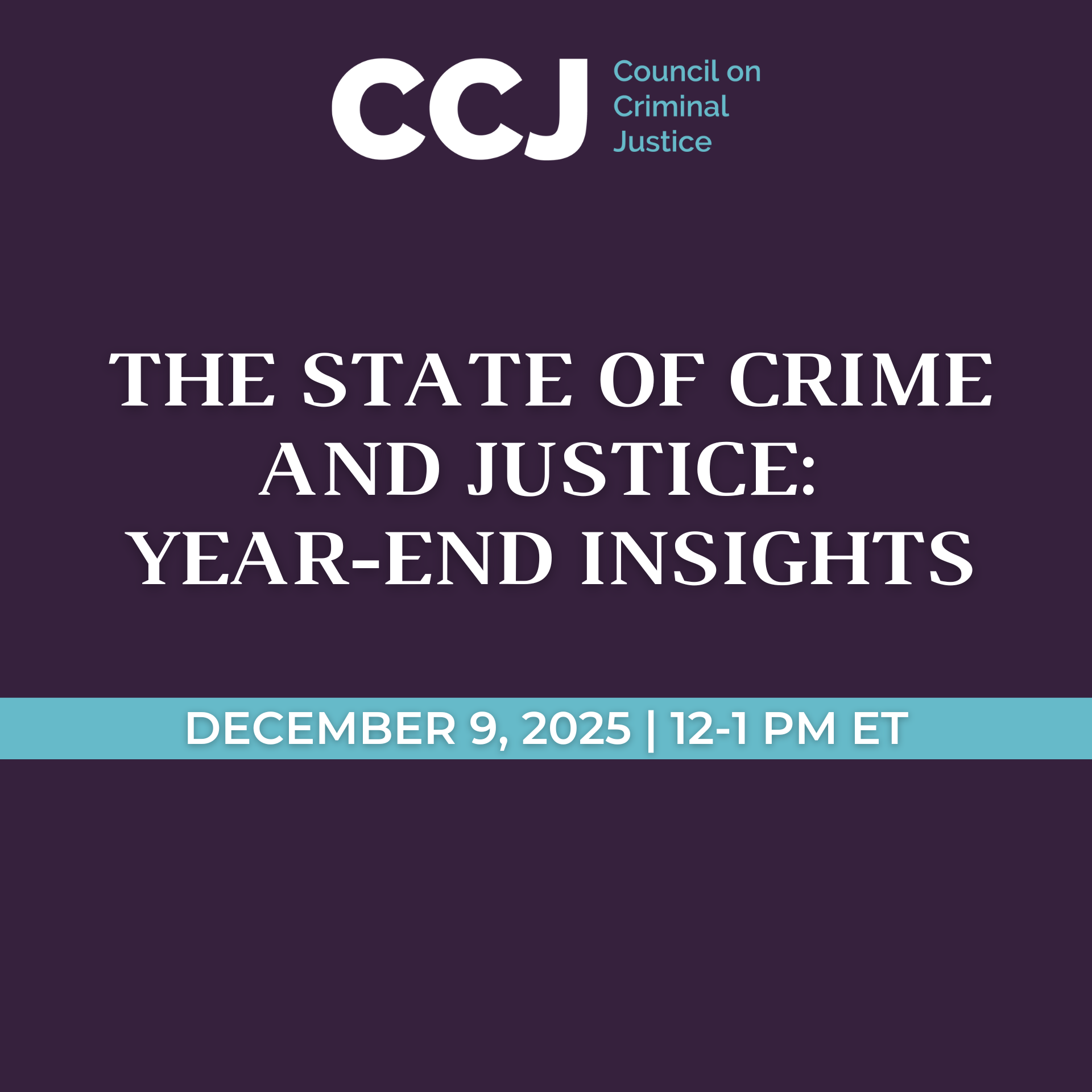New CCJ Analysis Also Finds that Property Crimes Increased in the First Six Months of 2022, while Drug Offenses Continued to Decline
FOR IMMEDIATE RELEASE
July 28, 2022
Contact: Jenifer Warren
jwarren@counciloncj.org
916-217-0780
WASHINGTON, D.C. – Murders and gun assaults in major American cities fell slightly during the first half of 2022, while robberies and some property offenses posted double-digit increases, according to a new analysis of crime trends released today by the Council on Criminal Justice (CCJ).
Examining homicides in 23 cities that make data readily available, the study found that the number of murders in the first half of the year dipped by 2% compared to the first half of 2021 (a decrease of 54 homicides in those cities). Gun assaults also fell, by 6%, during the first six months of this year compared to the same timeframe last year, while overall aggravated assault counts rose 4%. Robbery jumped by 19%.
The study’s authors called the drop in homicides encouraging but noted that the murder rate is still 39% higher than it was during the first half of 2019, before the COVID-19 pandemic.
“It is heartening to see the homicide numbers fall, even slightly, but American cities continue to lose too many of their residents to bloodshed,” said University of Missouri – St. Louis Professor Emeritus Richard Rosenfeld, the study’s co-author. “As we’ve said before, these elevated levels of violence require an urgent response from elected leaders. We must put evidence-backed strategies in place now to make communities safer.”
Murder has declined substantially in the U.S. since the early 1990s, although increases occurred in 2005 and 2006, and again in 2015 and 2016. In 2021, the homicide rate for the cities included in CCJ’s analysis was about half what it was for those cities 28 years earlier (15 deaths per 100,000 residents in those cities versus 28 per 100,000 in 1993).
The new study found that nine of the cities providing data recorded a rise in homicide during the first six months of the year, while 14 cities experienced either no change or reductions in homicide.
In other findings, trends in most property crimes reversed from the first two years of the pandemic. Residential burglaries (+6%), nonresidential burglaries (+8%), and larcenies (+20%) all rose in the first half of 2022. Motor vehicle thefts increased (+15%) but that trend began during the early months of the pandemic. The number of drug offenses fell in the first half of 2022 (-7%), continuing earlier pandemic patterns.
Noting the spikes in acquisitive crimes such as larcenies (mostly shoplifting and thefts from vehicles) and robberies, the authors said the uptick could reflect a return to somewhat normal living conditions, even as new variants of COVID have emerged. Opportunities for retail theft and commercial robberies have grown as stores have reopened, and the increase of people on the streets creates more targets for street robbers. Another factor may be “destabilizing economic conditions, such as the rise in food, fuel, and housing prices that began in the final months of 2021 and accelerated sharply in the first half of 2022,” the authors said.
Co-authored by CCJ Research Specialist Ernesto Lopez and Bobby Boxerman, the analysis updates a series of earlier reports with new data through June 2022. It examined crime rates for 10 offenses in a total of 29 cities, including Atlanta, Detroit, Baltimore, Boston, Chicago, Denver, Memphis, San Francisco, Washington, D.C., and Philadelphia. The smallest city in the sample was Norfolk, VA, with 245,000 residents; the largest was New York, with more than 8.4 million residents. Not all cities reported data for every crime.
The authors said that in response to the elevated rates of homicide, robbery, and other violent crimes, cities should adopt “comprehensive enforcement, prevention, and intervention efforts that focus on the specific people and places where violence is concentrated.” In January, CCJ’s Violent Crime Working Group produced a roadmap of 10 essential actions that cities can take now to reduce violence and save lives, without the need for new laws or enormous expenditures.
About the Data
The data for this report was obtained within days of the end of the study period in order to provide a timely snapshot of crime across the nation. As a result, these figures will likely differ from data subsequently published by individual police departments. For the most up-to-date information for a specific city, please visit its website.
About the Council on Criminal Justice
The Council on Criminal Justice (CCJ) is a nonpartisan invitational membership organization and think tank that advances understanding of the criminal justice policy challenges facing the nation and build consensus for solutions based on facts, evidence, and fundamental principles of justice.



